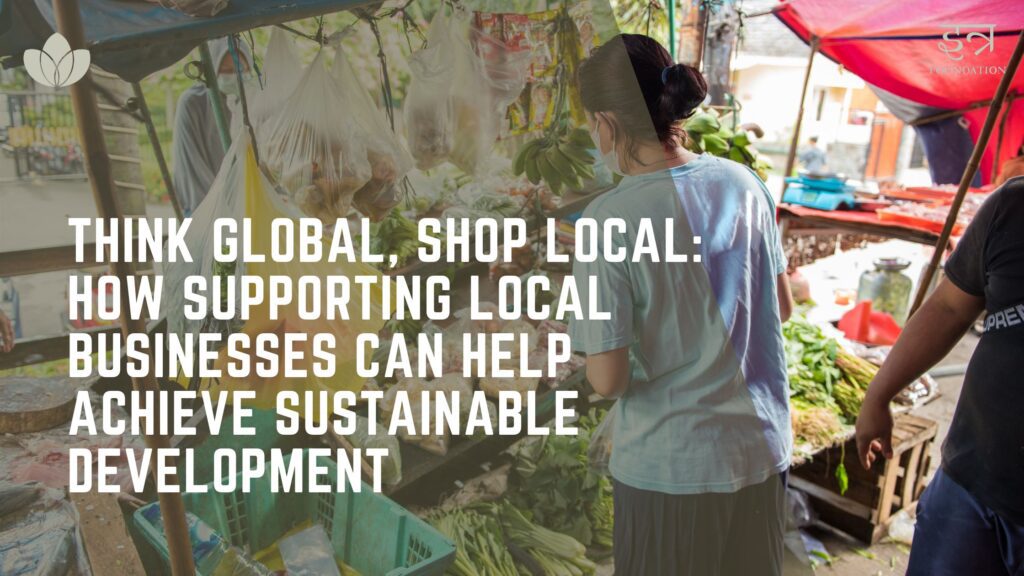Sustainability refers to the ability to meet the needs of the present without compromising the ability of future generations to meet their own needs. This includes environmental, social and economic aspects. It’s important because we are facing global challenges such as climate change, loss of biodiversity and unequal access to resources. By implementing sustainable practices, we can ensure a healthy and livable planet for ourselves and future generations.


Despite the importance of sustainability, promoting sustainable practices can be challenging. One of the main obstacles is the lack of engagement and motivation among individuals and organizations. People may not see the immediate benefits of sustainable actions or may not understand how their actions can have an impact. Additionally, there may be a lack of resources or infrastructure to support sustainable practices. One potential solution to these challenges is a gamified approach to sustainability. Gamification is the process of using game design elements and mechanics to engage and motivate people to achieve a non-game goal. By turning sustainability into a game, we can increase engagement and motivation, enhance learning and understanding and foster a sense of community and collaboration. In this blog post, I will explore the benefits of a gamified approach to sustainability and provide examples of successful initiatives that have
The benefits of a gamified approach
- One of the main benefits of a gamified approach to sustainability is increased engagement and motivation. By turning sustainability into a game, we can make it more fun and engaging for people to participate in. Game design elements such as points, badges, and leaderboards can provide immediate feedback and tangible rewards for sustainable actions. This can help to overcome the “feel good, do good” gap where people know they should do something good for the environment but don’t feel motivated to do it.
- Another benefit of a gamified approach is enhanced learning and understanding. Sustainability can be a complex and abstract concept, but by using game design elements, we can make it more interactive and engaging. This can help people to better understand the impact of their actions and the connections between different sustainability issues. Additionally, games can provide a safe environment to experiment with different solutions and learn from failure


Examples of successful gamified sustainability initiatives
- Green gaming: using video games to promote environmental awareness. This can be done by creating games that educate players on environmental issues and encourage them to take action in their everyday life to reduce their environmental impact. One example of this is the game “Foldit”, which teaches players about protein folding and how it relates to diseases such as Alzheimer’s and cancer. Another example is “Eco-Adventure Island” which teaches about renewable energy, waste reduction and biodiversity conservation through an interactive island adventure game.
- Eco-challenges: using social media and gamification to encourage sustainable behavior. Eco-challenges are a popular way to use social media and gamification to motivate people to take action toward sustainability. These can be organized by companies, non-profits, or government agencies and can be tailored to specific sustainability goals such as reducing energy consumption or waste. For example, the “Earth Hour City Challenge” is a global eco-challenge that encourages cities to take action towards energy conservation and sustainable development and is based on a point system and leaderboard.
- Sustainable cities: using gamification to engage citizens in urban planning and development. By using game design elements such as points and badges, city planners can engage citizens in the planning and development of sustainable cities. For example, “The Sustainable City” is a game that allows players to take on the role of a city planner and make decisions that affect the environmental, social and economic sustainability of the city. This can help to increase citizen engagement and understanding of sustainable urban planning.
- Energy conservation: using gaming elements to encourage energy efficiency. By using game design elements such as points, badges and leaderboards, organizations and households can be motivated to reduce their energy consumption. For example, “The Power of Efficiency” is a game that allows households to compete against each other to reduce their energy consumption. The game provides real-time feedback on energy usage and offers rewards for reaching energy-saving milestones.
A gamified approach to sustainability can also foster a greater sense of community and collaboration. By turning sustainability into a game, we can create a shared experience and a sense of competition among players. This can encourage people to work together towards a common goal and share their knowledge and resources. It also creates a sense of belongingness and shared purpose, which can be a powerful motivator.
This different approach can improve tracking and measurement of progress. By using game design elements such as points and badges, it’s easy to measure and track progress. This can provide a clear picture of how individuals and organizations are performing and identify areas for improvement. Additionally, games can be designed to track and measure progress in terms of environmental impact, which can be difficult to quantify in traditional sustainability initiatives.
In conclusion, gamification is a powerful tool to increase engagement and motivation, enhance learning and understanding, foster a greater sense of community and collaboration, and improve tracking and measurement of progress in sustainability efforts. By turning sustainability into a game, we can make it more fun and engaging for people to participate in and create a shared experience and a sense of competition among players.






